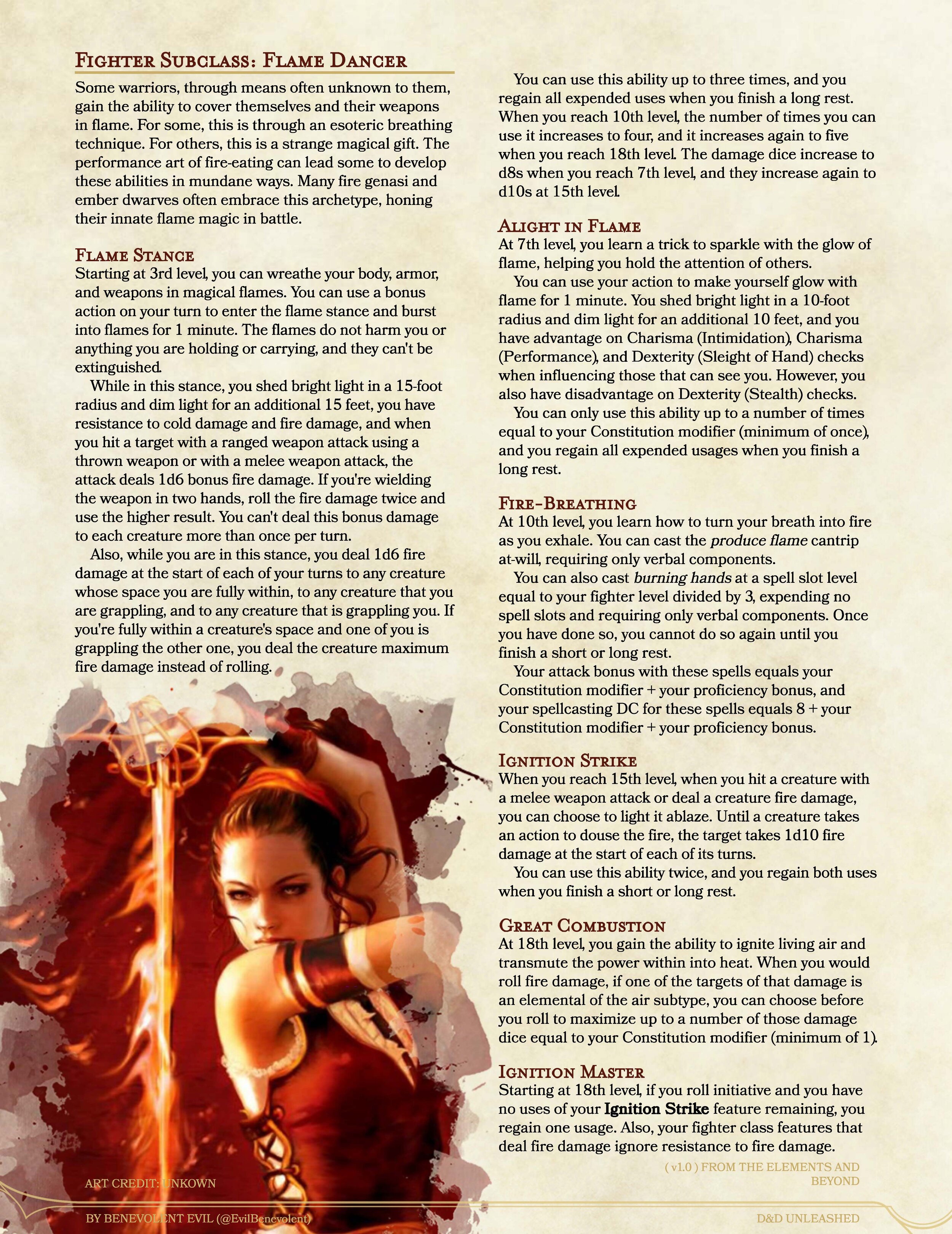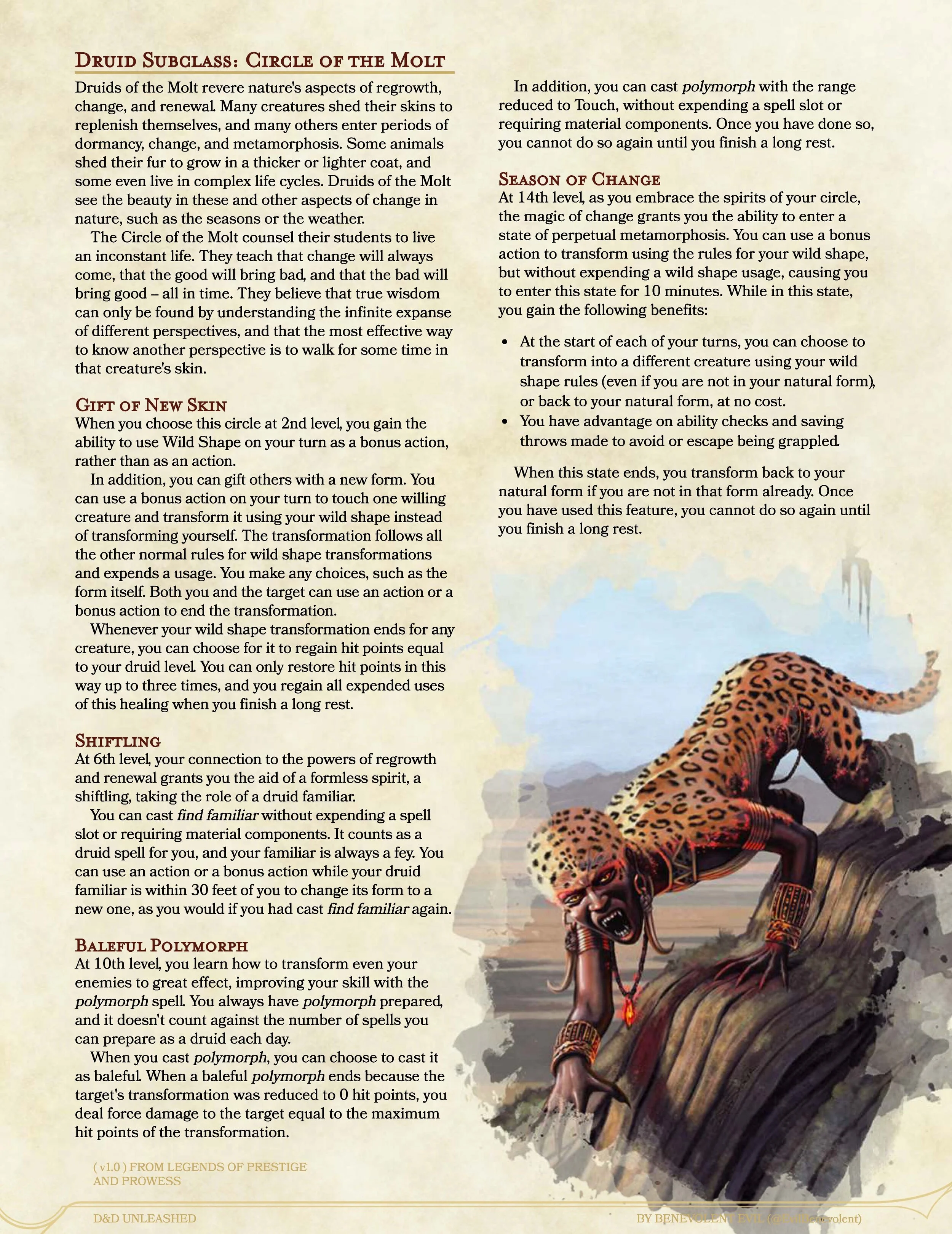The Flame Dancer Archetype (Fighter)
This content can now be found at its most updated version in The Elements and Beyond, a free 246-page compendium that you can download right here, filled with 23 subclasses, 8 spellcasting feats, 134 spells, 213 spell variants, 85 monsters, 30 magic items, 4 races plus 12 new subraces each with racial feats, and even more goodies for both players and DMs!
“Wielding her father’s blades, she moves in battle like a flickering flame — impossible to catch, yet deadly to the touch.”
PDF Link | D&D Beyond: Flame Dancer Archetype
The aesthetic of a warrior wielding a flaming weapon is so powerful that many stories feature fighters that can light their blades up all on their own. But access to many spells, like those given by the Eldritch Knight subclass, can feel like far more magic than a flame-wielding warrior desires. Other fighters have innate access to fire magic, such as a tiefling, a fire genasi, a fire-focused dragonborn, or the new ember dwarf subrace coming in The Elements & Beyond, and use their latent fire powers exclusively in non-spellcasting ways. There are even characters who wield flaming weapons through the use of an esoteric combat technique, such as a breathing style or a special stance (I’d use a .gif of Demon Slayer here, but I don’t want to spoil anyone), and others that just like fire and attention (if you’re playing a Rakdos guild-member in Ravnica, that probably describes your character).
For these fighters, the Flame Dancer archetype is here to fill that flaming-sword-shaped void. The central ability of this subclass is the Flame Stance feature, which enables the fighter to wreathe themselves in fire for 1 minute, boosting their weapon attacks, encouraging them to attack multiple enemies, and making them dangerous to grapplers. Flame Stance gives the fighter a long-rest resource to balance out the short-rest resources that the base fighter class mostly provides. That kind of resource-balancing is often a goal for the design of subclasses in D&D Unleashed. The fire and cold resistance that the stance also grants is usually a minor bonus at lower levels, and even at higher levels often is counteracted by enemy resistance to fire damage, making the stance less offensive and more defensive against most fiery enemies. The cold resistance also means that even fire genasi and tiefling Flame Dancers still gain a defensive bonus from entering the stance.
The rest of the subclass focuses on enhancing the themes of mundane fire-wielding and of a burning warrior. Alight in Flame allows these fighters to excel as exciting performers by lighting themselves on fire for the audience. It also works well for scaring the heck out of people, or for distracting them while you pick their pocket or palm a coin. Fire-Breathing leans into the flavor of real-life fire-eaters and fire-breathers, and their more fantastic representations in fantasy media. It gives the fighter an at-will ranged option (though the range is only 30 feet), and an area damage ability that they can use to help clear out groups of weaker enemies. It’s the only spellcasting used by the subclass, and its easy to flavor as nonmagical in most cases. Ignition Strike gives the fighter a regularly-available tool to burn a particular target down or force it to spend an action dousing itself, and at 18th level it becomes a constant in every fight. Finally, Ignition Master gives a very high-leveled Flame Dancer a real fighting chance even against creatures like many fiends and some undead like ghosts that have fire resistance.
This subclass also has a small amount of focus toward fighting elementals. Of course it can’t do much harm to fire elementals, but any air elementals or water elementals that attempt to engulf a Flame Dancer in Flame Stance will take extra fire damage, possibly even maximized. And Great Combustion is a neat ribbon that will rarely come up, but can be exciting when it does, super-charging a burning hands activation by igniting an air elemental. Of course this subclass is at its most dangerous when fighting an ice elemental!
Though being limited to only fire damage can be constraining for a player, the compendium that this subclass is appearing in, The Elements & Beyond, also contains a handful of methods for alleviating this, from magic items that help a Flame Dancer avoid the problem, to special monster options that alter damage weaknesses, to new monsters a DM can use that are vulnerable, resistant, or immune to fire. It’s one of the ways the compendium, and D&D Unleashed as a whole, attempts to design around the many ways that different tables treat the various damage types in the game.
PDF Link | D&D Beyond: Flame Dancer Archetype










